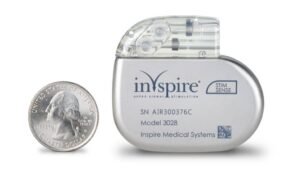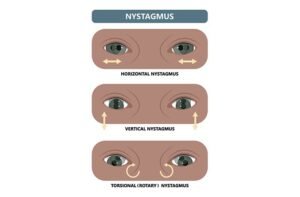PERRLA Eye Exam Meaning and Uses
Understanding PERRLA Eye Exam: Purpose and Significance
The PERRLA eye exam is a quick, in-office test that evaluates the health and responsiveness of the pupils. Performed by a healthcare professional or eye specialist, this test uses simple tools and typically takes only a few minutes. The PERRLA exam not only detects pupil-related issues but can also provide valuable insights into whether the problem is rooted in the eyes, the brain, or the central nervous system.
What Does PERRLA Stand For?
PERRLA is an acronym used to describe key aspects of the pupil’s function during an eye exam. The pupils are the circular openings in the center of the iris (the colored part of the eye), and they adjust size to control the amount of light entering the eye. The PERRLA exam checks the following six factors for healthy pupils:
-
Pupils: Positioned at the center of the iris.
-
Equal: Both pupils should be roughly the same size.
-
Round: The pupils should be round with even borders.
-
Reactive: Pupils should constrict (narrow) in response to light.
-
Light: Both pupils should constrict simultaneously when light is shined into one eye.
-
Accommodation: Pupils should adjust (constrict and dilate) to maintain focus on objects both near and far.
How the PERRLA Eye Exam is Performed
The PERRLA test is conducted in a dimly lit room using a penlight. The test includes the following steps:
-
Visual Assessment: The eye specialist checks the size, shape, and equality of the pupils. In adults, normal pupil size in low light ranges between 4 and 8 millimeters (mm).
-
Swinging Flashlight Test: The specialist swings the penlight across the eyes to see if the pupils constrict properly in response to the changing light.
-
Direct Reaction Test: The penlight is directed into one eye to check if the pupil constricts to the expected size (between 2 mm and 4 mm).
-
Consensual Response: The test continues with the penlight shined into one eye to see if both pupils constrict symmetrically.
-
Accommodation Test: The patient focuses on a pen or finger held at varying distances to ensure the pupils adjust appropriately to the changes in distance.
Interpreting Abnormal Results
A normal PERRLA result indicates that the pupils are functioning correctly. If the results are abnormal, it suggests that one or both pupils are not reacting to light as expected. This could indicate pupil dilation or constriction issues or an abnormal shape or position. Based on the findings, the PERRLA test can provide clues to the underlying cause, whether congenital, ocular (eye-related), neurological, or even infectious.
Some common conditions linked to abnormal pupil responses include:
-
Adie’s Pupil: Often associated with neurosyphilis, this condition leads to a pupil that responds sluggishly to light but constricts when focusing on nearby objects.
-
Anisocoria: This condition causes one pupil to be larger than the other, and it may result from head trauma, surgery, or infection.
-
Argyll-Robertson Pupil: Common in neurosyphilis, this condition results in a pupil that does not constrict normally in response to light but does when focusing on near objects.
-
Coloboma: A congenital condition where part of the eye doesn’t form properly, creating a hole or notch in the iris.
-
Cluster Headaches: This type of headache can cause one-sided pupil dilation along with other symptoms like eye tearing, eyelid drooping, and a stuffy nose.
-
Glaucoma: A group of eye diseases that can damage the optic nerve, leading to a smaller pupil size and potential vision loss.
-
Horner’s Syndrome: A condition typically resulting from a stroke or tumor, characterized by pupil constriction, eyelid drooping, and a sunken eyeball.
-
Iritis: Inflammation of the iris, which can result from eye infections, injuries, or unknown causes.
-
Third Nerve Palsy: This serious condition can cause pupil dilation due to compression of the ocular nerve, often caused by an aneurysm or brain tumor.
While the PERRLA test itself cannot diagnose these conditions, it helps narrow down possible causes, prompting further testing if necessary.
Potential Risks and Limitations
The PERRLA test is generally safe and non-invasive. However, it may trigger or worsen migraines in some individuals, and those with epilepsy should be cautious, as the flickering light could induce seizures. Additionally, the test may be less effective in individuals who have had their eyes medically dilated, such as with certain eye drops or drugs that cause pupil dilation. Medications that affect pupil size, such as amphetamines, opioids, and other recreational drugs, can also influence test results.
Conclusion
The PERRLA eye exam plays a critical role in assessing the health of the pupils and detecting a range of potential issues, from congenital eye conditions to neurological diseases. By evaluating pupil size and responsiveness to light, the PERRLA test provides valuable information that helps healthcare providers identify underlying causes and plan further investigations if ne







